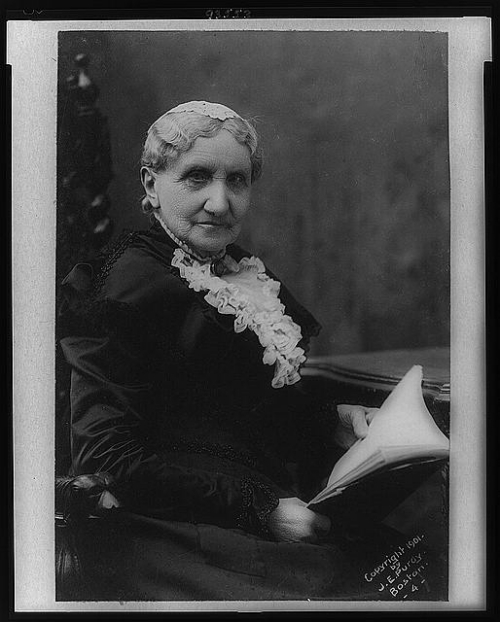Mary Livermore
b. 1820, Boston; d. 1905, Melrose, Massachusetts
From 1839 to 1842, Mary Livermore was a tutor on a Virginia plantation. The experience transformed the New England girl into a fervent opponent of slavery. She married Daniel Livermore, a minister and temperance advocate, in 1845 and, after a move to Chicago, they assumed editorship of The New Covenant, a Unitarian journal. Her organizational skills were fully tested during the Civil War in volunteer work for the U.S. Sanitary Commission, where she and colleague Jane Hoge coordinated local aid societies and mobilized a flow of food, medicine, and clothing to the front that constituted two-thirds of the material collected by the Commission. Livermore and Hoge also organized the Sanitary Fair in Chicago, which raised $70,000 for the war effort. Meanwhile, she published a collection of essays and sketches entitled Pen Pictures (1863). After the war, she threw herself into suffrage work. She was elected president of the Illinois Woman Suffrage Association in 1868, and launched the suffragist newspaper The Agitator in 1869. That year, conflicts arose among factions in the National Woman Suffrage Association; Livermore was among the group that broke away to form the American Woman Suffrage Association. In 1870, her paper merged with the newly founded Woman’s Journal in Boston, which, among other topics, advocated cooperative housekeeping. She edited the journal until 1872, when she began touring full-time on the lecture circuit, earning the name “Queen of the Platform.” She published continually, including My Story of the War: A Woman’s Narrative of Four Years Personal Experience (1887) and The Story of My Life; or, The Sunshine and Shadow of Seventy Years (1897).

Unknown artist. Mary A. Livermore, circa 1901. Library of Congress, Prints and Photographs Division, Washington, D.C.
Related Place Setting
Related Heritage Floor Entries
- Angelina Grimké
- Marian Anderson
- Josephine Baker
- Mary McLeod Bethune
- Anne Ella Carroll
- Mary Ann Shad Cary
- Prudence Crandall
- Milla Granson
- Sarah Grimke
- Frances Harper
- Zora Neale Hurston
- Edmonia Lewis
- Bessie Smith
- Maria Stewart
- Harriet Beecher Stowe
- Harriet Tubman
- Margaret Murray Washington
- Ida B. Wells